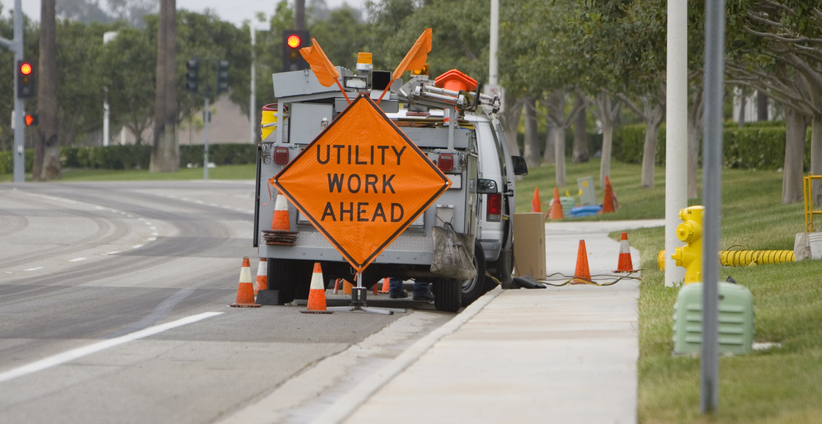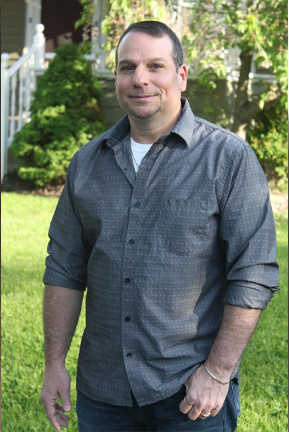
Protecting Public Workers
When the COVID-19 pandemic struck, Steve Scarpa began fishing anti-bacterial wipes, socks and even T-shirts out of the sewers in Groton, Conn.
Scarpa, president of United Steelworkers (USW) Local 9411 and a member of the city’s wastewater treatment crew, said residents went into “mad hysteria cleaning mode” and simply flushed potentially contaminated objects down the toilet.
And so Scarpa and his co-workers risked COVID-19 themselves to remove items that kept jamming the sewer pumps crucial to the wastewater system’s operation.
While millions of Americans did their jobs remotely during the pandemic, public servants turned out in force every day to repair roads, collect trash, operate water systems and keep communities functioning.
They had America’s back. Now, the nation must have theirs as well.
Public workers will face additional exposure to COVID-19 as the lockdown ends and Americans return to government buildings, streets, parks and beaches in growing numbers.
Cities and counties have an obligation to provide personal protective equipment (PPE), enforce social distancing in public offices and implement other measures to protect road crews, water department personnel and code enforcement officers.
But it isn’t only the government’s responsibility to help public workers navigate the health risks that constitute the new normal.
Everyone has a role to play.
Residents can do their part by wearing masks when water department workers show up at the door to repair broken meters and by staying out of government buildings when they’re sick.
They can safeguard the health of crews repairing sidewalks, mowing parks and cleaning storm drains just by staying at least six feet away from work areas.
The public needs to pause and think about the people who perform these essential services—and about the impact careless actions have on them. It’s simply unacceptable for public workers to put themselves at risk because someone flushed a bulky item down a toilet.
“When they push the handle, no one really understands or cares what happens to it,” explained Scarpa, who believes people began flushing items because they feared leaving them inside the house until garbage day.
“We had to go and unplug pumps every day,” he said. “If you don’t unplug them, they’ll overheat, and they’ll burn out. And these things aren’t cheap.”
Public servants performed crucial roles during the pandemic. Many put in longer hours and took on additional responsibilities, such as tracking coronavirus cases or going door-to-door to warn citizens of COVID-19 hazards.
They paid a heavy price for keeping America’s cities and counties operating.
In New York alone, more than 100 transit workers died of COVID-19. Many other public servants have been infected nationwide.
Despite the risks they faced, these workers and their unions, including the USW, had to fight for commonsense safety measures.
Wanda Howard, president of USW Local 12160, battled the South Central Connecticut Regional Water Authority to provide PPE for front-line field representatives.
She demanded laptops for union members with health risks so they could do their jobs remotely. She argued for more sick leave so workers could stay home when they felt unwell instead of exposing others to illness on the job.
In recent months, field workers answered only emergency calls at customers’ homes. But as the lockdown ends, Howard worries that customers will deluge authority officials with routine service requests, increasing the chances that her members will encounter someone with COVID-19.
“People who want water service are not going to say they’re sick or somebody in the house is sick,” Howard explained. “They’re just not going to admit to that. My fear is that they’re going to open up appointments and want our servicemen to put themselves more in harm’s way.”
Already, she said, some customers greet union members at the door without masks. At one job site, a contractor helped himself to a worker’s wrench, even though COVID-19 can live on surfaces.
As local governments resume regular operations, it’s important for elected officials to stress the crucial work that public servants do and the collective effort needed to protect them.
That means insisting that customers report any illnesses in a home before crews arrive for service calls. It means demanding that homeowners wear masks and give workers plenty of space to make repairs or perform inspections.
And it means reminding residents to wash their hands frequently, maintain social distancing and take other steps to guard against COVID-19, even if infection rates continue to fall.
“If they stay safe, then we stay safe,” Howard said.
Workers’ lives are at stake. Essential services are as well.
In addition to handling service calls, the 125 members of Local 12160 monitor chemical levels in the drinking water and operate the authority’s offices. If COVID-19 swept through the work force, Howard noted, more than 400,000 people in 15 communities could face service disruptions.
Workers know the hazards they face better than anyone else.
That is why they deserve extensive input into workplace safety plans.
When the pandemic hit, for example, the Niagara Falls Water Board asked Glenn Choolokian for help.
Choolokian, president of USW Local 9434, developed a safety plan with advice from labor and management that protected workers and kept the water flowing. He split the work force into teams that rotated one week on the job and one week off so a surge in infections couldn’t devastate the entire operation.
Now, as the authority resumes more regular operations, he tells union members to contact him if they encounter hazardous conditions or other problems.
As Choolokian sees it, the pandemic requires an unprecedented level of cooperation—one that could make unions and employers partners in pushing for new workplace standards and other ways to enhance safety.
“It’s time to look at things differently,” he said. “I think we have to educate ourselves and see if there’s new equipment, new ideas, new ways of doing things.”
The local promoted public involvement in worker safety through social media posts, and it encouraged local businesses to make and donate PPE. In tight-knit Niagara Falls, Choolokian said, it’s been easy to get residents’ buy-in.
In coming months, that kind of support will become ever more important.
The COVID-19 economic slowdown caused many businesses to close or scale back operations, reducing the tax revenue collected by local governments.
At a time that communities must do more to protect public workers, some may try to cut corners instead. Scarpa fears that towns will cut jobs or slash budgets, straining already-vulnerable work forces.
In a crisis like that, public servants will rely on the public to stand with them in demanding that officials implement aggressive safety plans and provide the other resources that workers need.
“We can’t make these places run with bubble gum and paper clips,” Scarpa said.
*
Image of utility truck from Getty Images. Photos of Wanda Howard and Glenn Choolokian
By clicking Sign Up you're confirming that you agree with our Terms and Conditions.
Related Blogs
Ready to make a difference?
Are you and your coworkers ready to negotiate together for bigger paychecks, stronger benefits and better lives?

